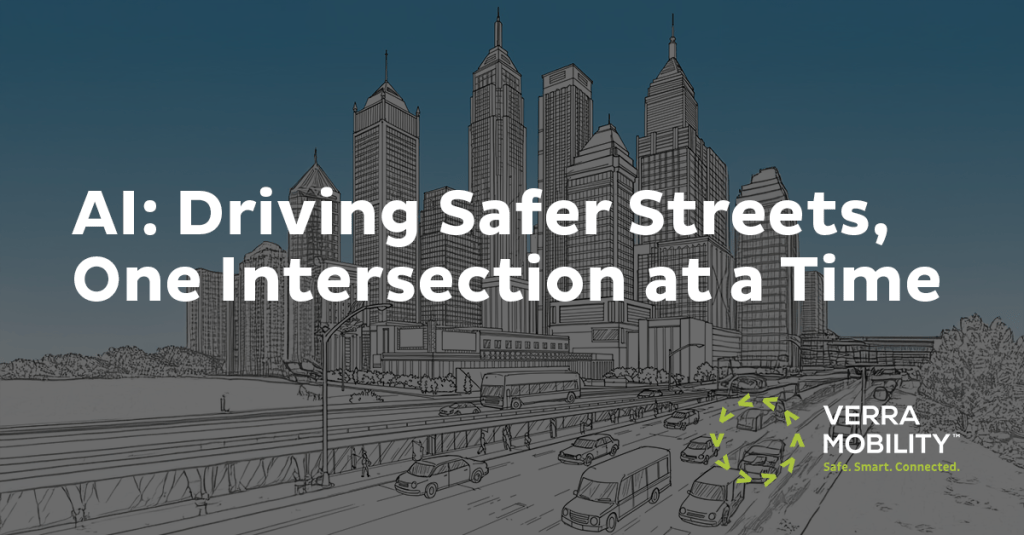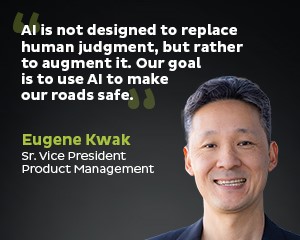

As the landscape of technology rapidly evolves, Eugene Kwak, our Senior Vice President of Product Management, delves into the transformative impact of AI on automated enforcement.
For decades, automated traffic enforcement has been a cornerstone of public safety on our streets and highways, helping to reduce crashes, improve driver behavior, and save lives. At Verra Mobility, we’ve been at the forefront of this industry, committed to building safer streets and communities.
As technology continues to evolve, so too does our approach to traffic safety. Artificial intelligence (AI) and machine learning (ML), while used for years, are emerging as powerful tools that can revolutionize the way we monitor and manage our roadways.
AI isn’t a buzzword in mobility technology; it’s a powerful tool that can help revolutionize how we approach traffic safety. By integrating AI into our solutions, we’re unlocking new possibilities to address the root causes of traffic accidents and improve overall road safety.
It’s important to remember that AI is not a magic solution but rather one tool in the traffic safety tool belt. And it’s most effective when used thoughtfully and strategically. To give some perspective, the technology and mobility industry is focused on leveraging AI to empower law enforcement and improve road safety in several key areas:
- Enhanced Emergency Response: By analyzing real-time traffic data, AI can quickly identify accidents and alert emergency services, reducing response times and potentially saving lives.
- Proactive Traffic Management: With AI-powered analytics, we can identify underlying causes of traffic incidents, such as congestion or driver behavior, and implement proactive measures to prevent future accidents.
- Smart Traffic Flow Optimization: By analyzing traffic patterns and identifying bottlenecks, AI can help optimize traffic flow, reducing congestion and minimizing the impact of incidents.
A Human-Centric Approach
While AI offers incredible potential, it’s essential to maintain a human-centric approach. AI is not designed to replace human judgment, but rather to augment it. Our goal is to use AI to make our roads safer, not to eliminate jobs or create a dystopian future.
As we continue to explore the possibilities of AI, we remain committed to our core mission: building safer streets and communities. By combining cutting-edge technology with a human-centered approach, we can create a future where everyone can travel safely.
